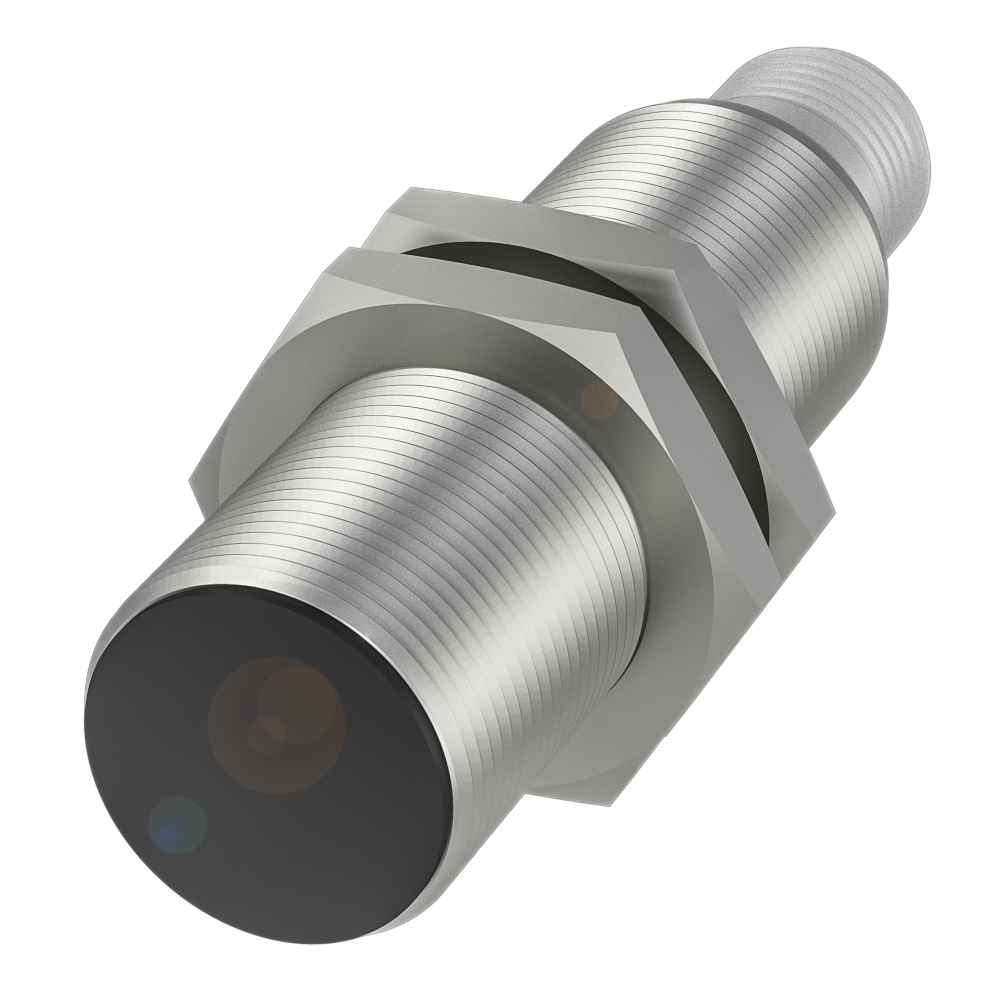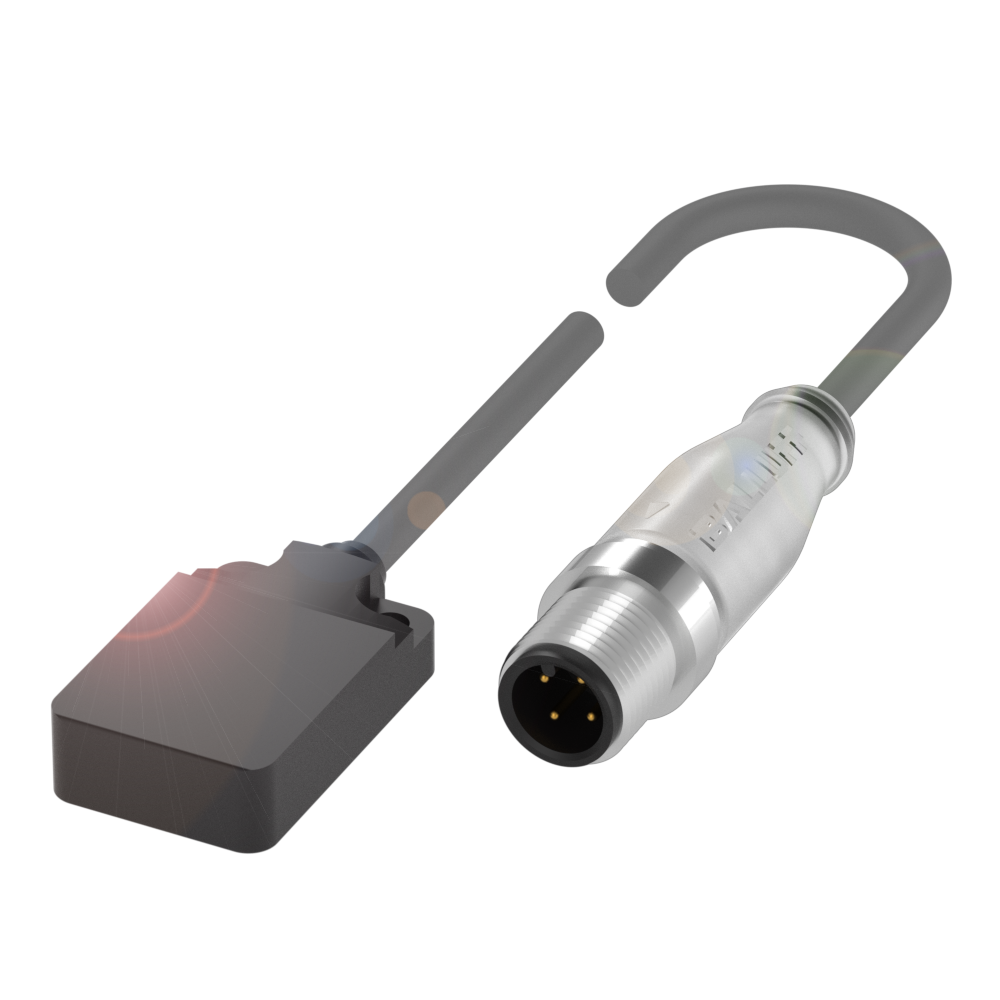
Both M18s and flatpacks are inductive or proximity sensors that are widely used in mechanical engineering and industrial automation applications. Generally, they are similar in that they produce an electromagnetic field that reacts to a metal target when it approaches the sensor head. And the coil in both sensors is roughly the same size, so they have the same sensing range – between 5 to 8 millimeters. They also both work well in harsh environments, such as welding.
There are, however, some specific differences between the M18 and flatpack sensors that are worth consideration when setting up production.

M18
One benefit of the M18 sensor is that it’s adjustable. It has threads around it that allow you to adjust it up or down one millimeter every time you turn it 360 degrees. The M18 can take up a lot of space in a fixture, however. It has a standard length of around two inches long and, when you add a connector, it can be a problem when space is an issue.

Flatpack
A flatpack, on the other hand, has a more compact style and format while offering the same sensing range. The mounting of the flatpack provides a fixed distance so it offers less adjustability of the M18, but its small size delivers flexibility in installation and allows use in much tighter fixes and positions.
The flatpack also comes with a ceramic face and a welding cable, especially suited for harsh and demanding applications. You can also get it with a special glass composite protective face, a stainless-steel face, or a steel face with special coatings on it.
Each housing has its place, based on your detection application, of course. But having them both in your portfolio can expand your ability to solve your applications with sensor specificity.
Check out this previous blog for more information on inductive sensors and their unlimited uses in automation.
